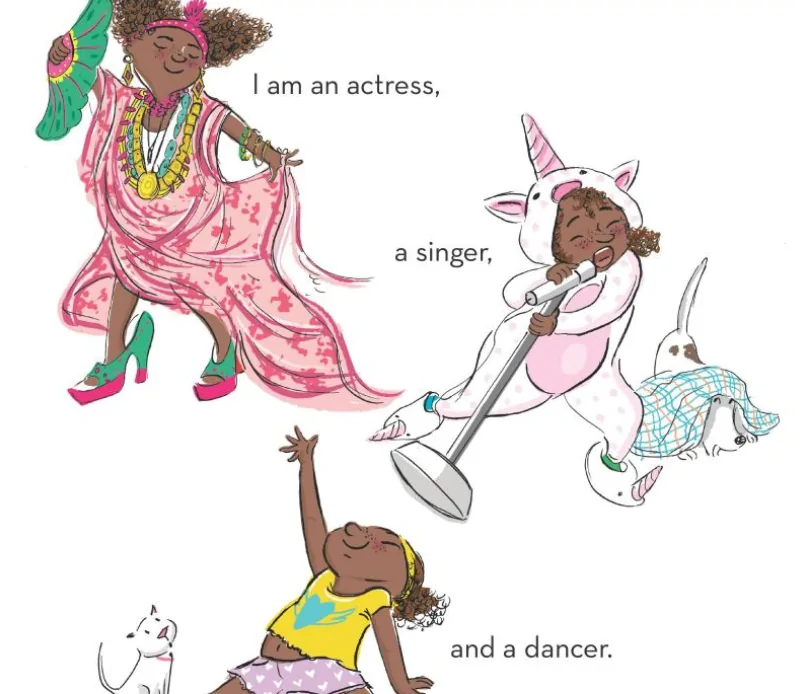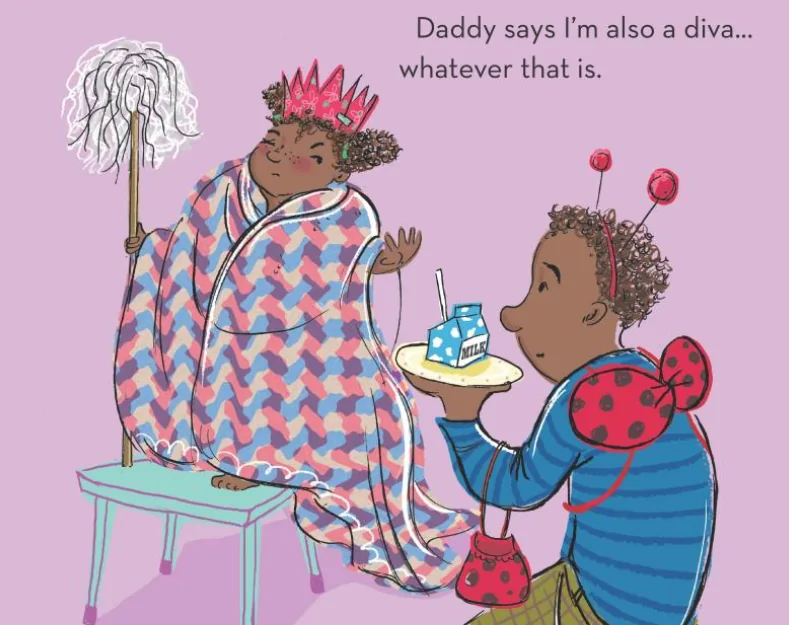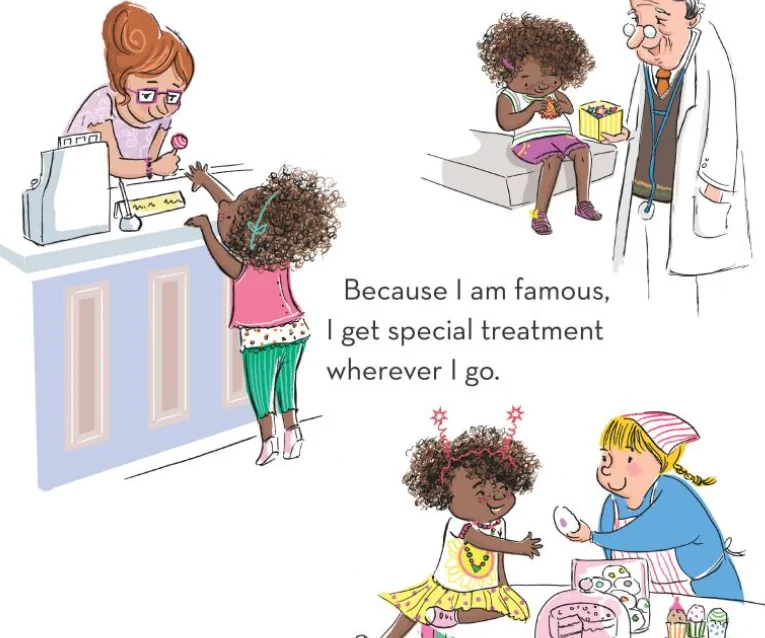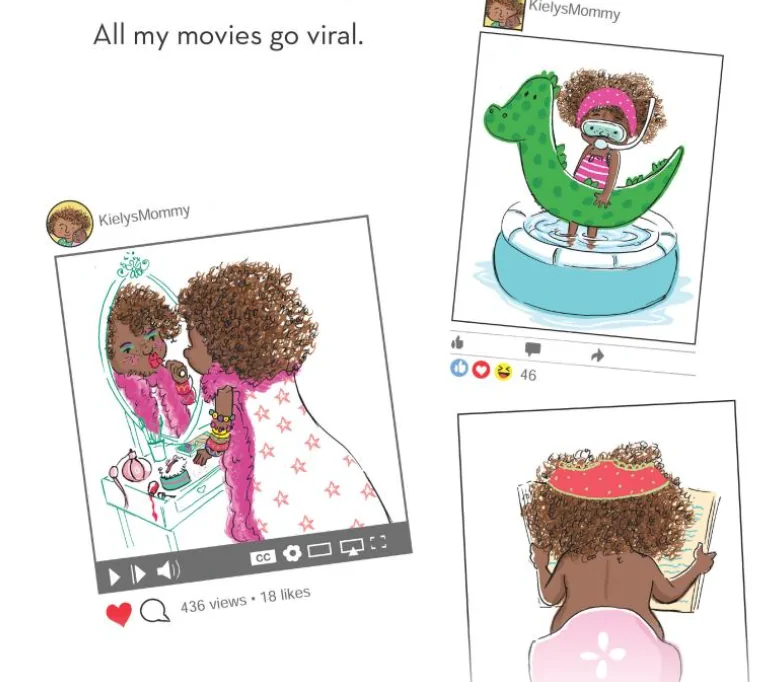Description
The humor in this book can be described as playful exaggeration or situational irony. It uses over-the-top descriptions of everyday family dynamics to present a humorous and lighthearted perspective. The idea of a child being treated as a celebrity, with parents playing roles like “paparazzi” and “staff,” adds a comedic twist rooted in relatability and imagination. It’s charming, family-friendly humor that celebrates the fun quirks in relationships.
Kiely knows she is famous! The paparazzi (her parents) follow her every move, documenting with cameras. It’s exhausting being famous, but someone has to do it. She even gets to perform a big song at her grandfather’s birthday. When she messes it up, she’s worried she’s lost her audience forever, but it turns out that no one is as loyal as her fans.
Taken from: The Anatomy of a Joke: How Exaggeration Makes Humor Work
The Anatomy of a Joke: How Exaggeration Makes Humor Work
By Michael Kelman Portney
Humor is a curious thing—it can make us laugh, think, and even reveal truths about the world around us. But if you look closely, almost every joke is built on the art of exaggeration. Whether subtle or outrageous, exaggeration adds weight, makes absurdities clearer, and pushes ordinary ideas into the realm of the extraordinary. Here’s a closer look at how exaggeration underpins nearly every joke and makes it resonate.
1. Stretching Reality to the Absurd
At the heart of most jokes lies a small, relatable truth that’s been exaggerated until it becomes something delightfully absurd. Think about jokes involving a “mile-high sandwich,” or “having a million things to do today.” These exaggerations take ordinary feelings—hunger, busyness—and stretch them so far that they become ridiculous. The humor comes from recognizing that, yes, we do feel swamped or starved sometimes, even if it’s not quite to those extremes.
In essence, exaggeration magnifies our daily struggles, making us laugh at how ridiculous they feel when taken to the extreme. It takes a small truth and blows it up into something unmistakably cartoonish, providing a kind of release from the stress of real life.
2. Highlighting Universal Experiences Through Hyperbole
Exaggeration also creates jokes that feel universal. Think of classic “I’m so tired…” jokes: “I’m so tired, I could sleep for a century.” No one literally wants to sleep for a hundred years, but it captures the level of exhaustion in a relatable way. By exaggerating the experience, the joke taps into something most of us have felt, letting us laugh at a shared, exaggerated version of it.
Hyperbole—intentional exaggeration—adds intensity, making the joke resonate. It allows people to immediately connect with the punchline, even if they’ve never actually wanted to sleep for a century. Exaggeration makes the ordinary epic, providing humor in shared human experiences.
3. Making Simple Observations Feel Surprising
A joke’s impact often comes from its ability to surprise the listener. Exaggeration is a powerful tool for injecting surprise into the most everyday observations. Consider the classic line, “I’ve told you a thousand times…” While the speaker probably hasn’t repeated themselves a thousand times, this exaggeration plays on the listener’s sense of familiarity and amplifies it.
Exaggeration catches us off guard by making the ordinary extraordinary. Suddenly, the listener is brought into a heightened version of reality, one where minor annoyances or habits feel larger-than-life. This playful stretching of the truth is what makes an otherwise simple observation feel surprising—and funny.
4. Exposing the Ridiculous Side of Truth
Exaggeration can reveal truths by pushing them to absurdity. Satirical jokes often use exaggeration to highlight flaws or contradictions in society. A political cartoon exaggerates a politician’s trait or policy to the extreme, making a point about its absurdity. Shows like The Simpsons or South Park use caricature and overstatement to hold up a mirror to society, making viewers laugh while also provoking thought.
By taking a truth and stretching it, exaggeration shows the ridiculousness of that truth. It lets people laugh at things that might otherwise feel uncomfortably real or tense. This kind of humor isn’t just about laughs—it’s about insight.
5. Turning Everyday Annoyances into Comedy
Life is full of tiny inconveniences, from spilling coffee on our shirt to getting caught in traffic. While these aren’t inherently funny, exaggeration allows comedians to turn these annoyances into comedy. Imagine a stand-up comedian joking about feeling like they’ve been stuck in traffic “since the dawn of time.” While clearly untrue, this exaggeration resonates because it captures the endless frustration of a traffic jam.
By blowing minor issues out of proportion, exaggeration helps us laugh at what would otherwise just be everyday irritants. The exaggeration lets us see the humor in our own overreactions to small problems, reminding us not to take life so seriously.
—
Conclusion: Exaggeration as the Core of Comedy
From satire to slapstick, exaggeration is what gives jokes their punch. It heightens reality, turns the mundane into the absurd, and lets us laugh at both ourselves and the world. At its core, every joke is about taking a piece of reality and stretching it until it becomes funny, absurd, or thought-provoking. Through exaggeration, humor transforms ordinary truths into something unforgettable. And maybe that’s why jokes resonate so deeply—they capture life as we sometimes feel it, not just as it is.
So, practice your exaggerations and do not hesitate to ask your mum for help. Mothers are usually good at these!








Reviews
There are no reviews yet.